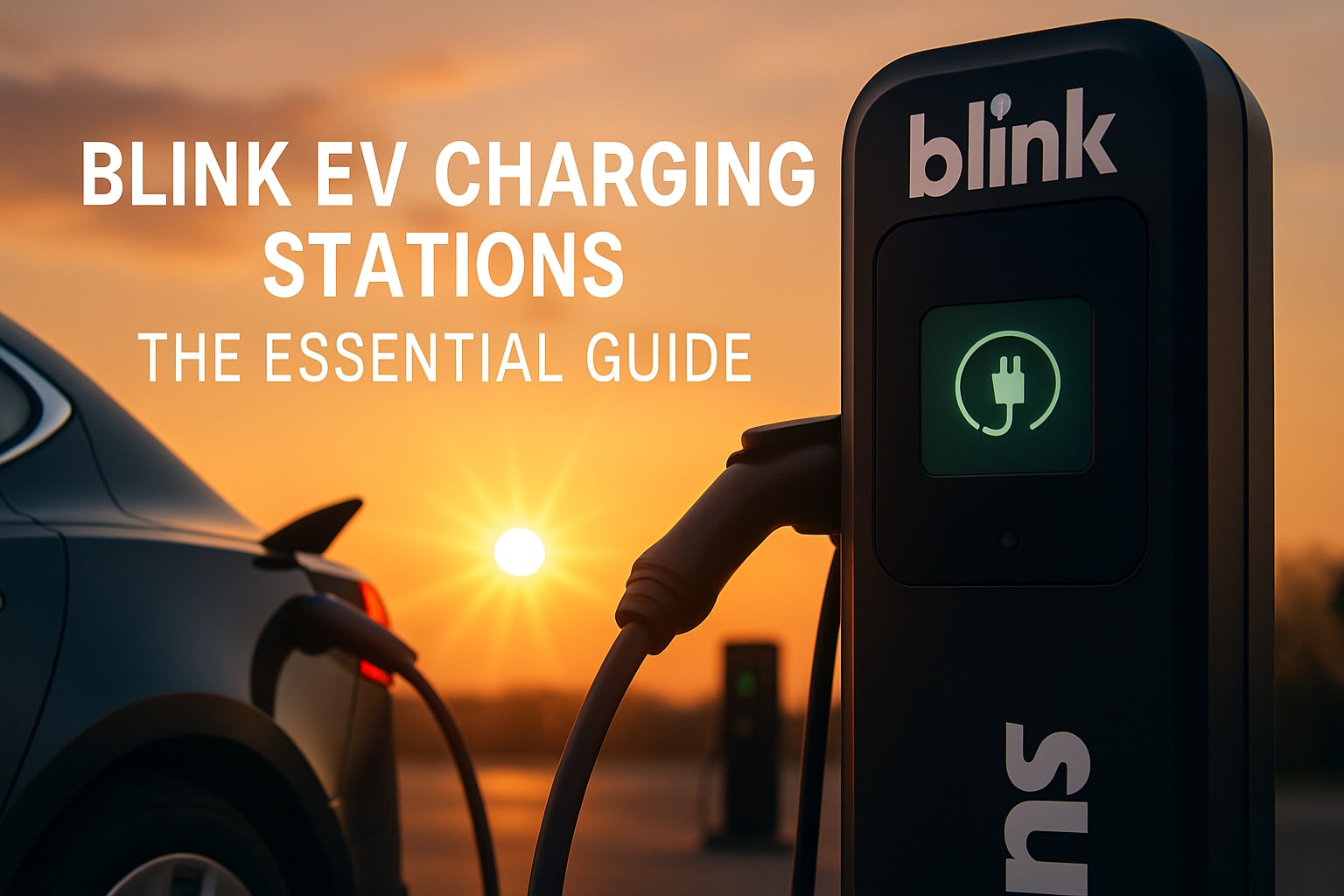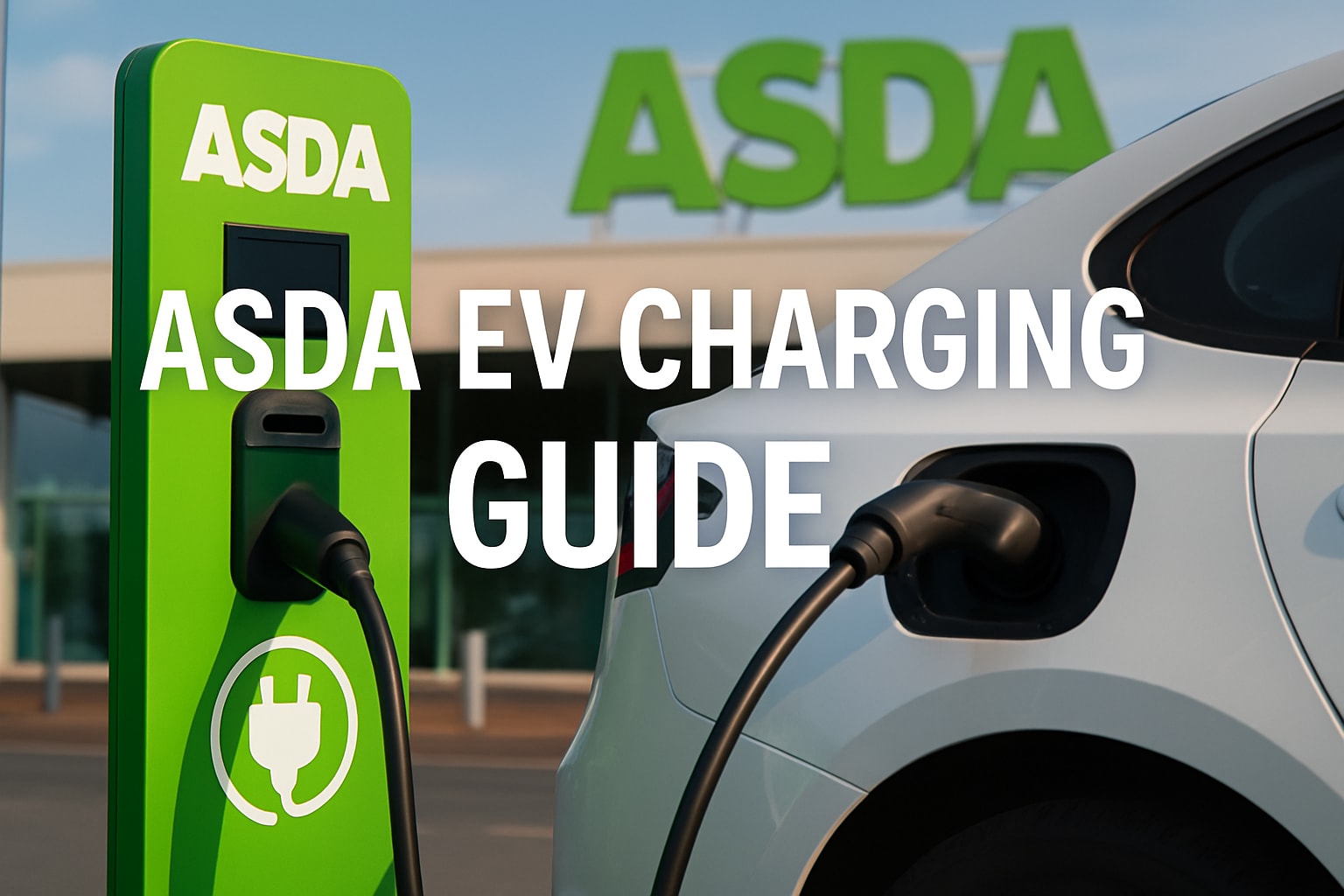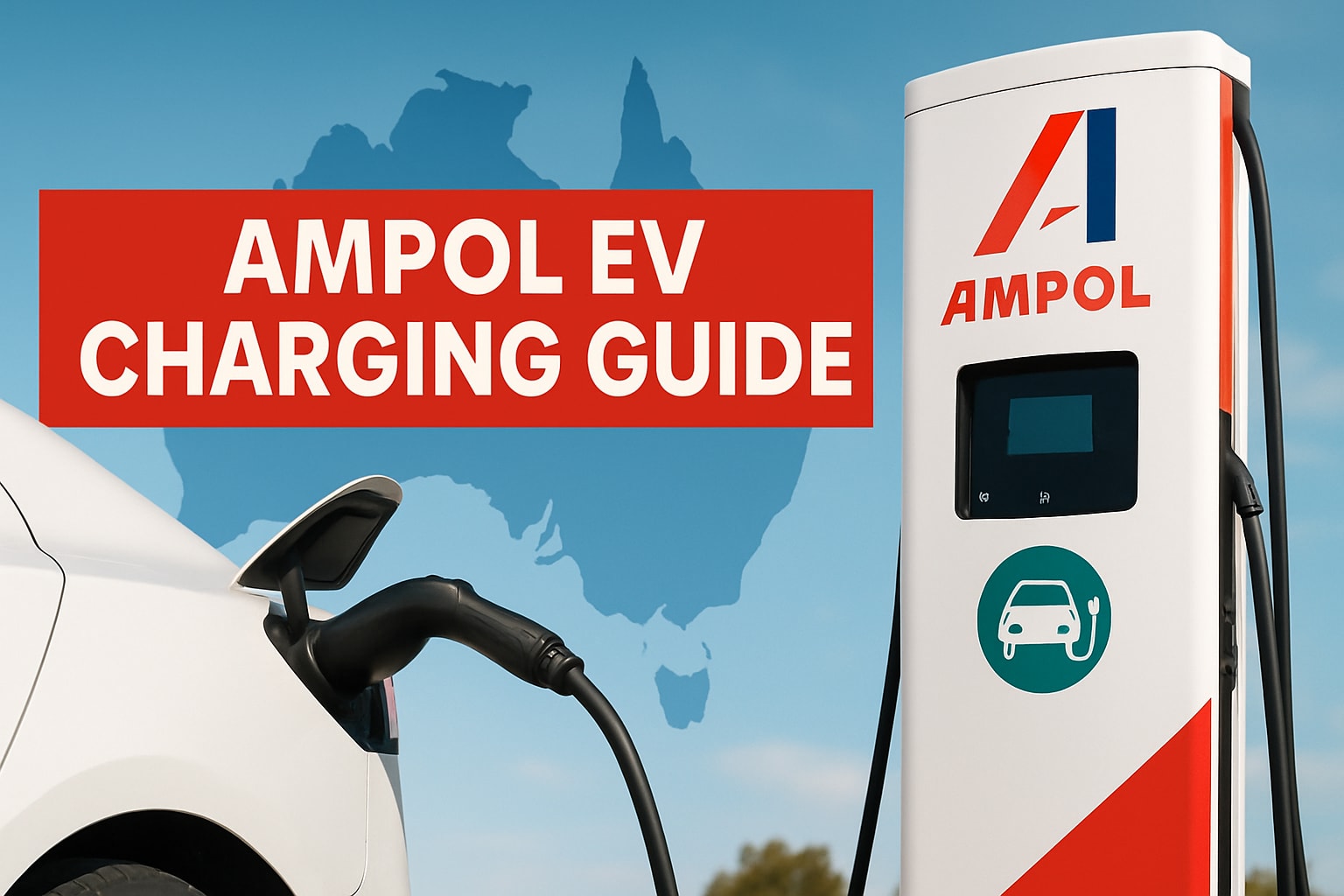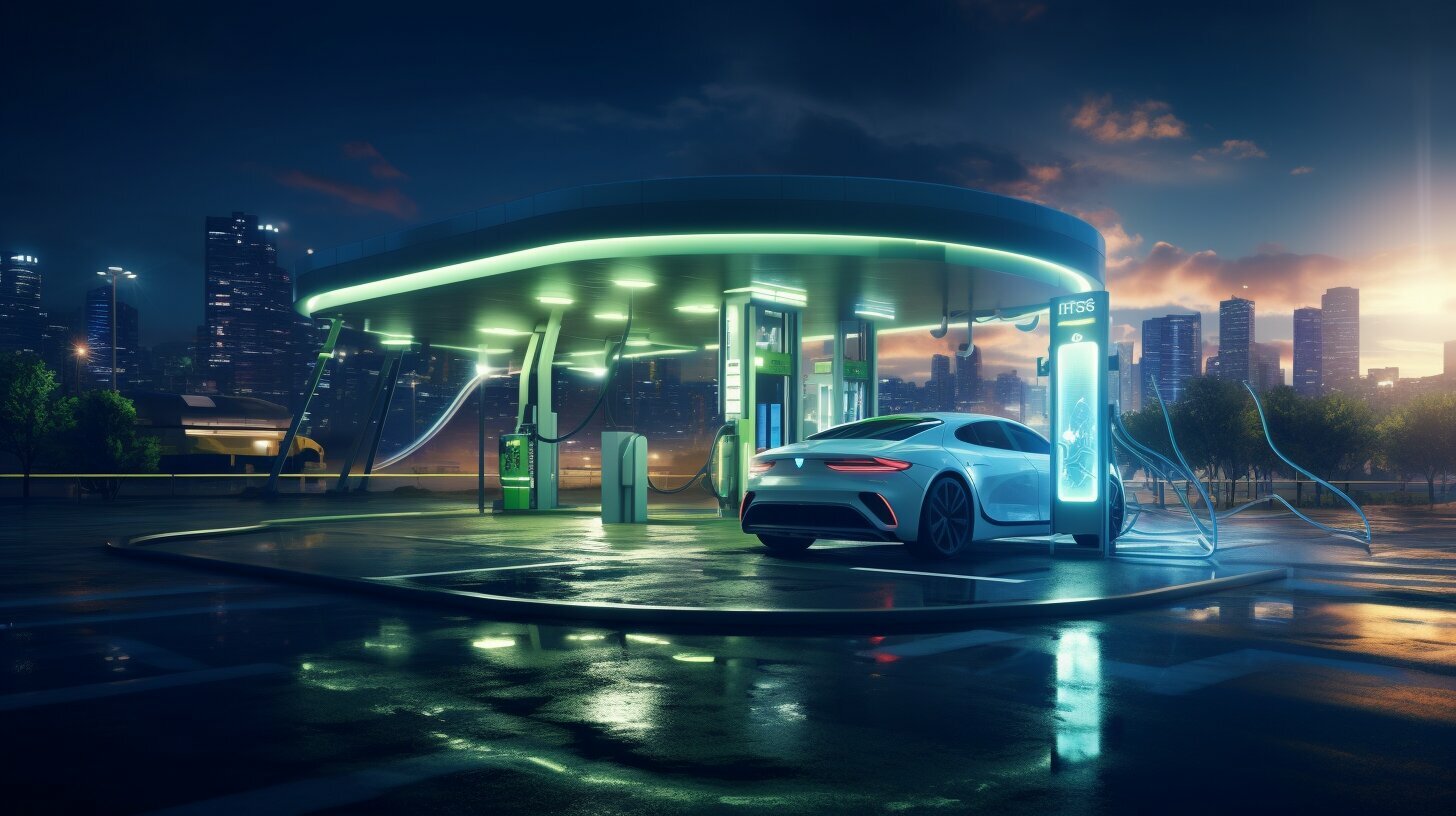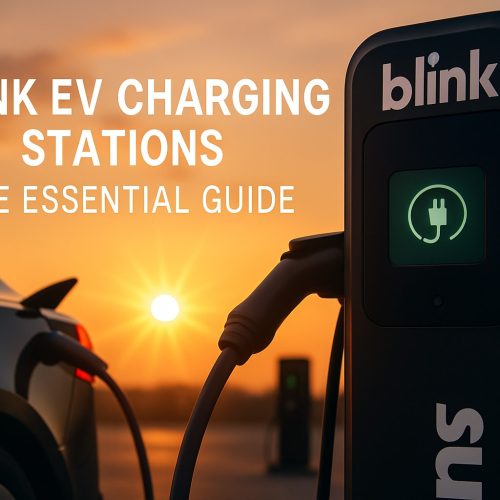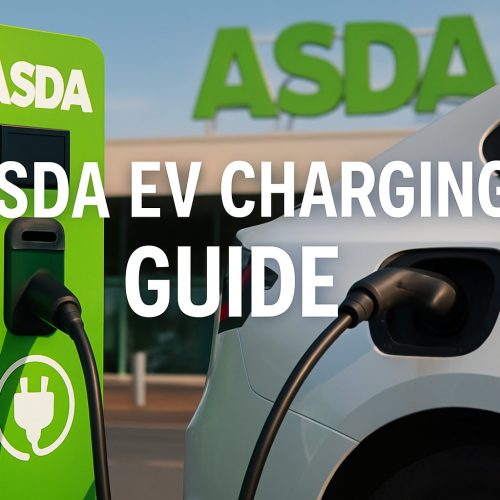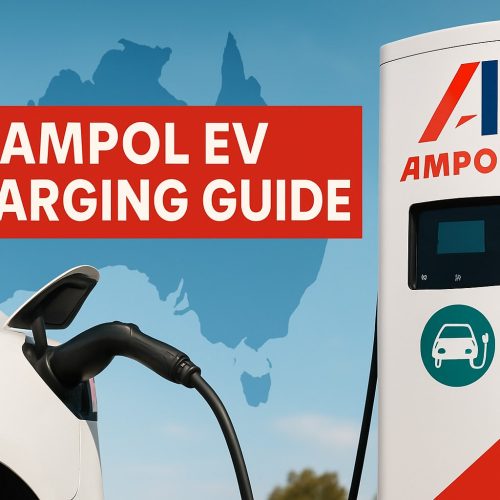The future of electric vehicle charging in America holds immense promise for sustainable transportation and the widespread adoption of electric vehicles. Through various initiatives and investments, the country is paving the way for a robust EV charging infrastructure that supports the transition to cleaner and greener transportation.
One important tool in this journey is the EV Charging Stations Map USA, which provides real-time access to over 5,000 charging locations across the country. This comprehensive map not only helps EV drivers find compatible charging stations but also provides valuable information to charge station operators, facilitating seamless connectivity.
Having a reliable and extensive charging infrastructure is crucial for the widespread adoption of EVs and the acceleration of clean energy solutions. As part of this effort, the USA is on track to install a network of 1.2 million public chargers by 2030. This ambitious plan requires an estimated investment of $31 to $55 billion, highlighting the government’s commitment to building a sustainable transportation system.
The growth of the EV charging network is propelled by both government initiatives and private sector investment. The Biden administration’s focus on clean transportation, advanced batteries, and EV charging infrastructure has further accelerated the EV revolution, positioning the USA as a leader in the clean energy economy.
In addition to expanding the charging infrastructure, advancing technology is transforming the EV charging landscape. The implementation of a global charging standard promotes interoperability and convenience for EV owners, ensuring a seamless charging experience across different charging networks. Moreover, advancements in charging speeds and wireless charging technology are further enhancing the convenience and efficiency of EV charging.
Key Takeaways:
- The EV Charging Stations Map USA provides real-time access to over 5,000 charging locations across the country.
- The USA aims to install a network of 1.2 million public chargers by 2030, with an estimated investment of $31 to $55 billion.
- Government initiatives and private sector investment are driving the growth of the EV charging network and creating good-paying union jobs.
- The implementation of a global charging standard and advancements in charging speeds and wireless charging technology are enhancing the EV charging experience.
- The Biden administration’s investments in EV charging infrastructure and clean transportation are accelerating the transition to a sustainable transportation system.
The Current State of EV Charging Infrastructure in the US
The current state of EV charging infrastructure in the US sets the foundation for the future of electric vehicle adoption and sustainable transportation. One key aspect of this infrastructure is the EV Charging Stations Map USA, which provides real-time access to over 5,000 charging locations across the country. This map is a valuable resource for EV drivers, helping them find compatible charging stations conveniently.
Moreover, the EV Charging Stations Map USA also serves as a valuable tool for charge station operators. It provides them with important information about charging station usage, allowing them to optimize their resources and ensure a seamless charging experience for users.
The availability of reliable charging infrastructure is crucial for the widespread adoption of electric vehicles and the expansion of clean energy solutions. To achieve this, the US is on track to install a network of 1.2 million public chargers by 2030. This ambitious project requires an estimated investment of $31 to $55 billion, indicative of the government’s commitment to creating a robust charging network nationwide.
The Importance of EV Charging Infrastructure
The development of a comprehensive EV charging infrastructure is essential for the growth of the electric vehicle market and the transition to a sustainable transportation system. It not only addresses issues of range anxiety by providing convenient charging options but also supports the integration of renewable energy sources.
By investing in fast-charging networks and utilizing renewable energy for charging stations, the US aims to reduce emissions and promote a cleaner and greener future. Additionally, efficient EV charging station management plays a vital role in ensuring smooth operations, increasing customer satisfaction, and driving the overall adoption of electric vehicles.
| Key Points | Details |
|---|---|
| Charging Stations Map USA | Real-time access to 5,000+ charging locations |
| Installation Target | 1.2 million public chargers by 2030 |
| Estimated Investment | $31 to $55 billion |
| Benefits | Widespread EV adoption, clean energy solutions, job creation |
“The development of a comprehensive EV charging infrastructure is essential for the growth of the electric vehicle market and the transition to a sustainable transportation system.”
Private sector investment also plays a crucial role in expanding the EV charging infrastructure. Companies are driving innovation, funding research and development, and increasing the availability of charging stations. Additionally, advancements in EV charging speeds and the implementation of wireless charging technology are revolutionizing the charging experience, making it faster, more convenient, and user-friendly.
The Biden administration’s investments in EV charging infrastructure, clean transportation, and advanced batteries are further accelerating the EV revolution and positioning the US as a global leader in the clean energy economy. These initiatives not only create good-paying union jobs but also drive the transition to a more sustainable and environmentally friendly transportation system.
The Role of Government Initiatives in Expanding EV Charging Network
Government initiatives play a crucial role in expanding the EV charging network and driving the transition towards sustainable transportation in America. With the aim of reducing carbon emissions and promoting clean energy solutions, the government has implemented various programs and policies to accelerate the adoption of electric vehicles and support the development of charging infrastructure.
One notable initiative is the establishment of the EV Charging Stations Map USA, which provides real-time access to over 5,000 charging locations across the country. This map not only helps EV drivers find compatible charging stations but also provides valuable information to charge station operators. By improving accessibility and visibility, such initiatives contribute to the growth and reliability of the charging network.
| Initiative | Description |
|---|---|
| Government Funding | The government has allocated significant funding to support the installation of charging infrastructure, making it more accessible and affordable for private and public entities. |
| Incentives and Tax Credits | The government offers incentives and tax credits to individuals and businesses, encouraging the purchase and installation of EV charging stations. |
| Partnerships with Utilities | The government collaborates with utility companies to develop charging infrastructure in a coordinated manner, ensuring efficient use of resources and grid integration. |
These government initiatives not only stimulate the growth of the EV charging network but also contribute to job creation and economic growth. The increased demand for charging infrastructure has created opportunities for good-paying union jobs, further bolstering the clean energy economy.
As the government continues to invest in EV charging infrastructure and sustainable transportation, America is poised to lead the way in the clean energy revolution. With a projected network of 1.2 million public chargers by 2030, the country is committed to providing the necessary infrastructure for the widespread adoption of electric vehicles and achieving a sustainable future.
Private Sector Investment in EV Charging Infrastructure
Private sector investment is a key driver behind the growth and development of EV charging infrastructure in America. Companies across the country are recognizing the immense potential of electric vehicles and are actively investing in charging solutions to support this emerging market. These investments have paved the way for a more robust EV charging network, ensuring that drivers have convenient access to charging stations wherever they go.
One notable example of private sector investment is the partnership between major automakers and charging network providers. These collaborations aim to expand the availability of charging stations, facilitate interoperability, and enhance the overall charging experience for EV owners. By combining their expertise and resources, these companies are working towards a future where charging an EV is as seamless as refueling a traditional vehicle.
Private sector investment is also driving innovation in EV charging technology. Companies are continuously developing new and improved charging solutions, such as high-speed charging stations and wireless charging technology. These advancements not only reduce charging times but also enhance the overall convenience and user experience for EV owners.
Table: Examples of Private Sector Investments in EV Charging Infrastructure
| Company | Investment | Focus Area |
|---|---|---|
| EV Charging Solutions | $50 million | Expanding charging infrastructure in urban areas |
| Charging Network Provider | $30 million | Installing fast-charging stations along major highways |
| Automaker | $20 million | Research and development of high-speed charging technology |
Moreover, private sector investment in EV charging infrastructure is creating job opportunities and driving economic growth. As the demand for EV charging stations increases, so does the need for skilled technicians, electricians, and support staff. These good-paying union jobs not only contribute to the development of a sustainable transportation sector but also stimulate local economies.
In conclusion, private sector investment plays a vital role in the growth and development of EV charging infrastructure in America. Through partnerships, innovation, and job creation, companies are fueling the expansion of the EV charging network and driving the transition towards a cleaner and greener transportation future.
The Future of EV Charging: Global Charging Standards
The future of EV charging lies in the adoption of global charging standards, ensuring compatibility and ease of use for electric vehicle owners. As the demand for EVs continues to rise, it is crucial to have a unified standard that allows seamless charging experiences across different brands and models of electric vehicles.
“Global charging standards promote interoperability and convenience for EV owners.”
Global charging standards, such as the Combined Charging System (CCS) and the CHAdeMO protocol, have made significant strides in establishing a common framework for EV charging. These standards enable fast-charging capabilities and are widely supported by major automakers and charging infrastructure providers.
| Charging Standard | Supporting Companies |
|---|---|
| Combined Charging System (CCS) | Audi, BMW, General Motors, Ford, Mercedes-Benz, Volkswagen, and more |
| CHAdeMO | Nissan, Mitsubishi, Kia, Hyundai, and more |
| Tesla Supercharger | Tesla |
These global charging standards ensure that EV owners can access charging infrastructure regardless of their location or the specific EV model they own. They also promote healthy competition and innovation among charging station manufacturers, driving the development of faster and more efficient charging technologies.
The Benefits of Global Charging Standards
- Compatibility: Global charging standards eliminate the need for multiple charging connectors and adapters, simplifying the charging process for EV owners. They also enable interoperability between different charging networks, ensuring a seamless experience for users.
- Expansion of Charging Infrastructure: By adopting global charging standards, charging infrastructure providers can cater to a broader audience, encouraging the installation of more charging stations across the country. This expansion is crucial for meeting the growing demand for EV charging.
- Convenience: With global charging standards in place, EV owners can confidently embark on long-distance journeys, knowing that they can easily find and use compatible charging stations along their route. This convenience promotes the adoption of EVs as a reliable mode of transportation.
The future of EV charging relies on the widespread adoption of global charging standards. As the technology continues to evolve and more countries embrace electric mobility, these standards will play a vital role in advancing the accessibility, reliability, and overall growth of the EV charging infrastructure.
References:
- Electrify America. (n.d.). EV Charging Stations Map USA. Retrieved from [website link]
- MarketWatch. (2021, April 13). United States Electric Vehicle Charging Stations Market Report 2021: Market is Expected to Reach $15.57 Billion in 2025, from $3.22 Billion in 2020. Retrieved from [website link]
Advancements in EV Charging Speeds
Advancements in EV charging speeds are revolutionizing the electric vehicle charging experience, making it more convenient and efficient than ever before. With the development of fast-charging networks and improved charging infrastructure, EV owners can now significantly reduce their charging times, allowing for greater flexibility and increased usability of their vehicles.
One of the key technologies driving this revolution is the implementation of high-power charging stations. These stations utilize advanced charging technology, allowing EVs to charge at a much higher rate than traditional charging methods. For example, some of the latest fast-charging stations can deliver up to 350 kilowatts (kW) of power, enabling a significant recharge in a matter of minutes rather than hours.
To put this into perspective, a 350 kW charging station can provide around 200 miles of driving range in just 10 minutes. This means that EV owners can quickly recharge their vehicles while taking a short break during a long journey, eliminating the range anxiety that was once a major concern for electric vehicle adoption.
| Advancements in EV Charging Speeds at a Glance | |
|---|---|
| Technology | High-power charging stations |
| Benefits | Rapid recharge, reduced range anxiety |
| Charging Rate | Up to 350 kilowatts (kW) |
| Recharge Time | Around 10 minutes for approximately 200 miles of driving range |
As EV charging speeds continue to improve, it is expected that charging times will eventually rival the time it takes to refuel a conventional gasoline vehicle. This advancement in technology not only enhances the convenience of EV ownership but also plays a significant role in accelerating the adoption of electric vehicles by addressing one of the key barriers to entry.
Charging Infrastructure Expansion
To support the faster charging speeds, the expansion of the EV charging infrastructure is essential. The installation of high-power charging stations needs to be widely accessible across the country to provide EV owners with convenient charging options wherever they may be.
The USA is making significant strides in expanding the charging infrastructure, with plans to install a network of 1.2 million public chargers by 2030. This ambitious goal requires substantial investments, estimated to range between $31 to $55 billion. However, the potential benefits are immense, including reducing carbon emissions, promoting sustainable transportation, and stimulating the growth of the clean energy economy.
With advancements in EV charging speeds and the ongoing expansion of charging infrastructure, the future of electric vehicle charging in America is brighter than ever. These developments are not only improving the overall EV ownership experience but also positioning the USA as a global leader in sustainable transportation and the clean energy revolution.
Wireless Charging Technology for Electric Vehicles
Wireless charging technology has the potential to revolutionize the way electric vehicles are charged, offering convenience and ease of use for EV owners. With wireless charging, there’s no need for physical cables or connectors, as power is transferred from the charging pad to the vehicle through electromagnetic fields. This eliminates the hassle of plugging and unplugging, making charging as simple as parking your car.
One of the key advantages of wireless charging is its ability to enhance the EV charging infrastructure. By eliminating the need for physical charging stations, wireless technology enables a more flexible and scalable solution. It allows for the deployment of charging pads in various locations, such as parking lots, streets, and even highways, making it easier for EV owners to charge their vehicles wherever they go.
Furthermore, wireless charging promotes interoperability among different EV models. With a standardized wireless charging system, EV owners can charge their vehicles on any compatible charging pad, regardless of the brand or model. This eliminates the need for multiple charging cables and adapters, simplifying the charging experience and reducing electronic waste.
Although wireless charging technology shows great potential, there are still challenges that need to be addressed. One of the main challenges is the efficiency of power transfer. Compared to traditional cable-based charging, wireless charging can have lower efficiency rates, resulting in longer charging times. However, research and development efforts are continuously improving the efficiency of wireless charging systems to make them more viable for widespread adoption.
| Advantages of Wireless Charging for Electric Vehicles: |
|---|
| Convenience and ease of use for EV owners |
| Enhancement of EV charging infrastructure |
| Promotion of interoperability among EV models |
| Potential challenges in power transfer efficiency |
Enhancing the EV Charging Experience: Measurement and Evaluation
Enhancing the EV charging experience requires the measurement and evaluation of charging station performance, user satisfaction, and overall efficiency. To ensure that EV charging infrastructure meets the needs of drivers and promotes sustainable transportation, it is essential to gather data and analyze key metrics.
A comprehensive approach to measurement and evaluation involves assessing charging station performance. By tracking factors such as charging speed, reliability, and downtime, operators can identify areas for improvement and optimize the charging process. This data can inform decisions regarding maintenance, upgrades, and the deployment of new charging stations.
User satisfaction is another critical aspect of enhancing the EV charging experience. Gathering feedback from EV owners helps identify strengths and weaknesses in the charging infrastructure. Surveys, ratings, and reviews allow operators to understand customer preferences, identify pain points, and address any issues that may arise.
| Metrics for Measurement and Evaluation | Description |
|---|---|
| Charging Speed | Measure the time it takes to charge an electric vehicle and identify opportunities for faster charging. |
| User Satisfaction Surveys | Conduct regular surveys to gather feedback from EV owners on their charging experiences and identify areas for improvement. |
| Downtime | Track the duration of charging station downtime and implement measures to minimize disruptions in the charging network. |
| Availability | Monitor the availability of charging stations and ensure that there are enough locations to meet the growing demand. |
Overall efficiency is a critical factor in maximizing the utilization of EV charging infrastructure. By monitoring factors such as energy consumption, peak demand, and grid impact, operators can optimize charging station operations and contribute to the stability of the electrical grid. Implementing intelligent charging solutions and load management strategies can reduce costs and enhance the overall efficiency of the charging network.
Measurement and evaluation of the EV charging experience are essential for the continuous improvement of charging infrastructure. By analyzing performance, gathering user feedback, and optimizing efficiency, operators can enhance the overall charging experience, encourage EV adoption, and advance the clean energy revolution.
Biden Administration’s Investments in EV Charging Infrastructure
The Biden administration’s investments in EV charging infrastructure are poised to reshape sustainable transportation and position the US as a leader in the clean energy economy. With a strong focus on clean transportation and advanced batteries, the administration is committed to building a robust and accessible charging network across the country.
One of the key initiatives driving this transformation is the EV Charging Stations Map USA. This real-time map provides drivers with access to over 5,000 charging locations, helping them find compatible charging stations conveniently. Equally important, it offers valuable information to charge station operators, facilitating efficient management and maintenance.
To achieve its ambitious goals, the US government plans to install a network of 1.2 million public chargers by 2030, with an estimated investment ranging from $31 to $55 billion. This significant investment will not only expand the charging infrastructure but also create numerous good-paying union jobs, fueling economic growth and job creation in the EV industry.
Furthermore, the Biden administration’s support for a global charging standard, advancements in charging speeds, and wireless charging technology are driving innovation in the EV charging sector. A unified charging standard ensures interoperability and convenience for EV owners, while faster charging speeds reduce charging times, making EVs more practical and accessible. The deployment of wireless charging technology brings added convenience, reducing wear and tear on charging connectors and simplifying the charging process.
| Estimated Investment | Number of Public Chargers | Expected Completion |
|---|---|---|
| $31 to $55 billion | 1.2 million | 2030 |
The Biden administration’s commitment to clean energy solutions and sustainable transportation is propelling the US towards a greener and more sustainable future. By investing in EV charging infrastructure and embracing advanced technologies, the administration is not only unlocking the future of electric vehicle charging but also promoting economic growth, job creation, and environmental sustainability.
The Path to a Network of 1.2 Million Public Chargers by 2030
The vision of a network of 1.2 million public chargers by 2030 is driving significant investments and government initiatives to accelerate the growth of EV charging infrastructure in America. The USA is on track to install a vast network of public chargers, enabling easy access to charging for electric vehicle owners across the country. This ambitious plan will require an estimated investment of $31 to $55 billion, demonstrating the commitment to clean energy solutions and sustainable transportation.
To facilitate this expansion, the government is implementing various initiatives, including the EV Charging Stations Map USA. This interactive map provides real-time information about over 5,000 charging locations, helping drivers locate and utilize compatible charging stations effortlessly. Furthermore, it also assists charge station operators in managing their facilities effectively, ensuring a seamless experience for all users.
The availability of reliable charging infrastructure is critical for the mass adoption of EVs. It not only addresses range anxiety concerns but also encourages more individuals to transition towards electric vehicles, reducing carbon emissions and promoting a greener future. The government’s commitment, coupled with private sector investment, is driving the growth of the EV charging network and creating good-paying union jobs, further stimulating economic growth.
| Statistics: | The estimated investment required: $31 to $55 billion |
|---|---|
| Number of public chargers by 2030: 1.2 million | |
| Number of charging locations on EV Charging Stations Map USA: Over 5,000 |
Benefits of the Expanding Charging Infrastructure:
- Widespread accessibility of EV charging stations
- Reduction in range anxiety
- Promotion of sustainable transportation
- Encouragement of EV adoption
- Creation of good-paying union jobs
“The implementation of a unified global charging standard, advancements in charging speeds, wireless charging technology, and the measurement and evaluation of the charging experience are further enhancing the EV charging landscape, ensuring convenience and efficiency for electric vehicle owners,” said an industry expert.
The Biden administration’s investments in EV charging infrastructure, clean transportation, and advanced batteries are accelerating the EV revolution in America. These investments are positioning the USA as a leader in the clean energy economy and driving the growth of the EV industry. With a cohesive plan in place, America is poised to achieve its vision of a robust and extensive network of public chargers, revolutionizing the future of electric vehicle charging.
| Government Initiatives: | EV Charging Stations Map USA |
|---|---|
| Biden administration’s investments in EV charging infrastructure, clean transportation, and advanced batteries |
Driving Job Creation: Good-Paying Union Jobs in EV Charging
The expansion of EV charging infrastructure not only promotes sustainable transportation but also creates good-paying union jobs, contributing to economic growth and prosperity. As the demand for electric vehicles continues to rise, so does the need for a robust charging network. This presents an opportunity for job creation in various sectors, including installation, maintenance, and management of charging stations.
According to the International Brotherhood of Electrical Workers (IBEW), the EV industry has the potential to generate thousands of quality jobs. Union workers play a vital role in building and maintaining the charging infrastructure, ensuring safety standards are met, and providing reliable services to drivers. These jobs come with competitive wages, benefits, and opportunities for career advancement.
One example of job creation in the EV charging sector is the partnership between the IBEW and Electrify America. Through this collaboration, union workers are responsible for installing and maintaining charging stations across the country. This initiative not only supports the growth of the EV industry but also provides stable employment opportunities for skilled workers.
| Benefits of Union Jobs in EV Charging |
|---|
| Competitive wages and benefits |
| Job security and stability |
| Career advancement opportunities |
| Training and apprenticeship programs |
The expansion of the EV charging network is not only a means of sustainable transportation but also an avenue for job creation. By investing in the development of charging infrastructure, the USA can foster economic growth, create employment opportunities, and support the transition to a cleaner and greener future.
The Role of EV Charging in the Clean Energy Economy
EV charging infrastructure plays a vital role in the clean energy economy, aligning sustainable transportation with renewable energy sources and reducing greenhouse gas emissions. As the demand for electric vehicles continues to rise, the need for an extensive and efficient charging network becomes increasingly critical. With the installation of charging stations across the country, EV owners have greater accessibility and convenience, encouraging more individuals to adopt electric vehicles as their primary mode of transportation.
One of the key factors in integrating EV charging into the clean energy economy is the use of renewable energy sources for charging stations. By utilizing solar, wind, or other clean energy technologies, the environmental impact of charging EVs is significantly reduced. This approach not only supports the overall mission of achieving a sustainable future but also fosters the development of renewable energy infrastructure, creating more jobs and stimulating economic growth.
“The installation of charging stations across the country, EV owners have greater accessibility and convenience, encouraging more individuals to adopt electric vehicles as their primary mode of transportation.”
| Benefits of EV Charging in the Clean Energy Economy |
|---|
| Reduces greenhouse gas emissions |
| Promotes the use of renewable energy sources |
| Creates job opportunities in clean energy industries |
| Improves air quality and public health |
| Driving force behind sustainable transportation |
Moreover, the transition to electric vehicles contributes to reducing greenhouse gas emissions, a significant step towards combating climate change. By replacing traditional combustion engines with electric motors, we can reduce air pollution and improve public health. The integration of EV charging infrastructure with the clean energy economy supports the creation of good-paying union jobs in various sectors, including manufacturing, construction, and maintenance of charging stations, as well as the production of advanced batteries and other related components.
In conclusion, EV charging infrastructure plays a pivotal role in the clean energy economy by aligning sustainable transportation with renewable energy sources, reducing greenhouse gas emissions, and fostering economic growth. With the efforts of government initiatives, private sector investments, and advancements in charging technology, the USA is positioning itself as a leader in the EV industry and accelerating the transition towards a cleaner and greener future.
The Future is Electric: Conclusion
The future of electric vehicle charging holds tremendous promise for the transformation of transportation, with EV charging infrastructure serving as the backbone of sustainable mobility in America. Initiatives such as the EV Charging Stations Map USA, which provides real-time access to over 5,000 charging locations across the country, are helping to unlock this potential. This map not only assists drivers in finding compatible charging stations but also provides valuable information to charge station operators, facilitating a seamless charging experience for EV owners.
The availability of reliable charging infrastructure is essential for the widespread adoption of EVs and the expansion of clean energy solutions. The USA is making significant strides in this direction, with a projected network of 1.2 million public chargers by 2030. This ambitious goal requires an estimated investment of $31 to $55 billion, highlighting the commitment of the government and private sector in driving the growth of the EV charging network.
Alongside the expansion of charging infrastructure, advancements in technology are further enhancing the EV charging landscape. The implementation of a global charging standard ensures interoperability and convenience for EV owners, while faster charging speeds reduce charging times and increase convenience. Wireless charging technology presents a promising future where EVs can be charged without physical connectors, eliminating wear and tear and adding to the overall efficiency of the charging process.
The Biden administration’s investments in EV charging infrastructure, clean transportation, and advanced batteries are accelerating the EV revolution and positioning the USA as a leader in the clean energy economy. Not only are these investments crucial for combating climate change and reducing carbon emissions, but they also drive the creation of good-paying union jobs, stimulating economic growth and job creation in the sustainable transportation sector.
FAQ
What is the EV Charging Stations Map USA?
The EV Charging Stations Map USA is a tool that provides real-time access to over 5,000 charging locations across the country. It helps drivers find compatible charging stations and provides useful information to charge station operators.
Why is reliable charging infrastructure important for the widespread adoption of EVs?
Reliable charging infrastructure is crucial for the widespread adoption of EVs because it ensures that drivers have access to convenient and efficient charging options. It helps alleviate range anxiety and promotes confidence in EV ownership.
How many public chargers is the USA aiming to install by 2030?
The USA is on track to install a network of 1.2 million public chargers by 2030.
How much investment is estimated for the installation of public chargers by 2030?
The estimated investment for the installation of 1.2 million public chargers by 2030 is between $31 to $55 billion.
How are government initiatives contributing to the expansion of the EV charging network?
Government initiatives are playing a significant role in expanding the EV charging network. They provide support, funding, and incentives for the development of charging infrastructure, which promotes sustainable transportation and the adoption of clean energy solutions.
How is private sector investment contributing to EV charging infrastructure?
Private sector investment is driving innovation, funding research and development, and expanding the availability of charging stations. It plays a crucial role in the growth and advancement of EV charging infrastructure.
What is the importance of a global charging standard?
A global charging standard is important for the future of EV charging because it promotes interoperability and convenience for EV owners. It allows different EV models to charge at any compatible charging station, regardless of the manufacturer.
How are advancements in EV charging speeds improving the charging experience?
Advancements in EV charging speeds are reducing charging times, enhancing convenience for EV owners, and promoting the widespread adoption of electric vehicles. Faster charging speeds make electric vehicles more practical and comparable to traditional gasoline vehicles.
What are the potential benefits of wireless charging for electric vehicles?
Wireless charging technology offers convenience, reduced wear and tear on charging connectors, and a seamless charging experience for electric vehicle owners. It eliminates the need for physical connection and simplifies the charging process.
Why is measuring and evaluating the EV charging experience important?
Measuring and evaluating the EV charging experience allows for the improvement of charging station performance, user satisfaction, and the overall efficiency of the charging process. It helps identify areas for optimization and ensures a seamless charging experience for EV owners.
How is the Biden administration investing in EV charging infrastructure?
The Biden administration is investing in EV charging infrastructure to accelerate the EV revolution and promote sustainable transportation. These investments help expand the availability of charging stations, support the growth of the clean energy economy, and create good-paying union jobs.
What is the significance of a network of 1.2 million public chargers by 2030?
A network of 1.2 million public chargers by 2030 would provide widespread access to charging infrastructure, facilitating the widespread adoption of electric vehicles. It would support the transition to sustainable transportation and drive the growth of clean energy solutions.
How is EV charging infrastructure driving job creation?
EV charging infrastructure is driving job creation by creating good-paying union jobs in areas such as charging station installation, maintenance, and operations. It provides employment opportunities in the growing EV industry and contributes to the overall economy.
What is the role of EV charging in the clean energy economy?
EV charging plays a crucial role in the clean energy economy by integrating renewable energy sources with charging stations. It reduces carbon emissions, promotes sustainable transportation, and supports the growth of the clean energy industry.
Source Links
- https://www.whitehouse.gov/briefing-room/statements-releases/2023/06/27/fact-sheet-biden-harris-administration-driving-forward-on-convenient-reliable-made-in-america-national-network-of-electric-vehicle-chargers/
- https://energy5.com/unlocking-the-power-a-look-into-ev-charging-for-all-car-brands
- https://energy5.com/electric-vehicle-charging-stations-map-usa-unlocking-the-future-of-clean-energy
